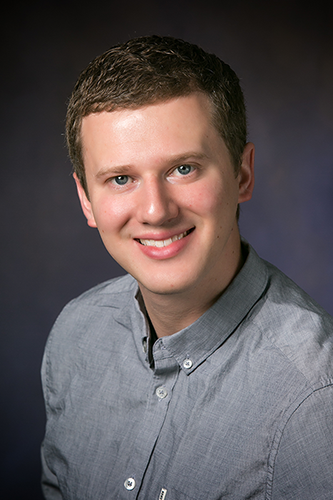

They’re age-old questions pondered by parents everywhere: How are children affected by their environment and their inherited biological traits? How much of development is guided by a combination of both? Studies of twins provide key insights into these questions, and that’s why researchers at Illinois are recruiting families of twins to the Illinois Twin Project.
Psychology professors Daniel Briley from Illinois and Jennifer Tackett from Northwestern University are heading the project, which will help tease apart how much people’s personality traits and life outcomes are impacted by genetics or their environments.
The project currently has no limit to the number of twins and multiples that can enroll, but it aims to recruit as many as possible of the nearly 6,000 twins born in Illinois each year for the database. With twins typically sharing home environments, and identical twins sharing 100 percent of the same genes, a key focus of the new project will be to identify ways in which experiences, environments, and inherited genetic material are dependent on one another.
Such databases have offered valuable insights into human behavior. The Minnesota Twin Family Study for example, one of the largest twin studies in the country, accumulated almost 8,000 twins in its database.
A memorable early version of this work in Minnesota focused on identical twins who were separated and raised in different homes. Its study revealed that twins raised apart were as likely to be similar to each other as twins raised in the same homes for some psychological characteristics, suggesting that genetics, possibly more than their home environments, may be the root of the twins’ similarities that were found.
How can it be that growing up in the same home did not make siblings more similar than siblings growing up in different homes? Researchers today are determining if experiences in the home environment might be more important for differentiating siblings. For example, children have unique relationships with their parents and unique perceptions of their home life. Rather than making people similar, these important experiences might actually lead children to grow up differently.
Some stories of twins separated at birth are astounding. For example, the “Jim Twins,” Jim Lewis and Jim Springer, were separated at birth in Ohio in 1940 and eventually learned that they’d run astonishingly parallel lives in terms of habits, behaviors, jobs, and relationships.

Their eerie similarities fueled more debates over the entangled influences of genetics and the environment—a topic Briley has explored with twin studies in the past. Previous research had shown that parents with high expectations for their children tended to have children that succeeded academically. It could be that parent expectations caused children to succeed. However, Briley thought the research assumed that parenting was a one-directional relationship, where children passively soaked up whatever parenting they were given.
In response, Briley used a twin study to find that, in addition to parents transferring their beliefs to their offspring, children’s genetically influenced dispositions influenced the kind of parenting they received. Parents seem to mold their parenting based on their children, showing that genetic and environmental influences are not so easy to separate. The Illinois Twin Project plans to test these sorts of questions.
With large amounts of money and human hours required to contact thousands of families, twin projects often demand cooperation between a wide array of scientists.
“They’re difficult to do,” Briley said. “They're a high-intensity, high-resource investment because twins are rare, so we have to put a lot of energy into recruiting participants.”
Ten U of I researchers and faculty affiliates from the departments of psychology, sociology, communication, and others are interested in using the database to eventually send out surveys and collect data. There are over 10 twin registries across the country—and a growing interest among researchers to use the databases for their own research.
Briley's research group works with the Illinois Department of Public Health, which uses its records about multiple births in the state to send recruitment mailings to potential participants. One of Briley’s team’s first goals is to recruit a sample of 5-year-olds each year, in hopes of following children as they transition into the education system in order to identify potential sources of disparities.
The Illinois Twin Project registry will be open to twins and multiples, from newborns to 17-year-olds. One out of every 25 eligible families that join the Illinois Twin Project registry will receive $25.
“I want the project to be a holistic look at the family, from the dinner table to the neighborhood and to school; all the contexts in which children grow are important for development,” Briley said.
The project is funded by the University of Illinois and Northwestern University. If you have questions about the Illinois Twin Project, you can visit their website or email them at illinoistwinproject@gmail.com


